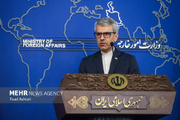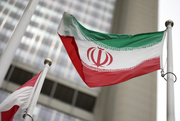India's extensive rail network is the main form of travel in the vast country, but it is poorly funded and deadly accidents often occur.
The Howrah-Mumbai Express derailed near Jamshedpur in the eastern state of Jharkhand before dawn.
"At least two people were killed and 20 injured," Indian Railways spokesman Om Prakash Charan told AFP.
The accident happened at around the same time a goods train coming from the opposite side derailed, possibly colliding with the passenger train when it passed by.
"There was another derailment of a goods train nearby, but it was unclear if the two accidents occurred concurrently," Charan said.
Eighteen train coaches were thrown off the tracks, Charan added, with rescue operations ongoing to clear the site.
India has launched a $30 billion railway infrastructure modernisation in a bid to boost the economy and connectivity.
But analysts say that while the number of accidents has gone down over time, India's antiquated rail system still has a long way to go.
An average of 20,000 people died each year between 2017 and 2021 in rail accidents, according to official records.
Defective tracks, poor maintenance and old signalling kit combined with human error were the main cause of derailments, a report by India's top audit authority said.
Last year, nearly 300 people were killed when a passenger train and a stationary goods train collided, with the derailed compartments then striking another fast-moving passenger service.
India's worst-ever rail accident occurred in 1981, when a cyclone blew a train off its tracks and into a river in Bihar state, leaving 800 dead and more than 100 injured.
Indian Railways, the world's fourth-largest rail network, runs some 14,000 trains daily with 8,000 locomotives over a vast system of tracks some 64,000 kilometres (40,000 miles) long.
The trains carry more than 21 million people each day.
MNA/PR


























Your Comment